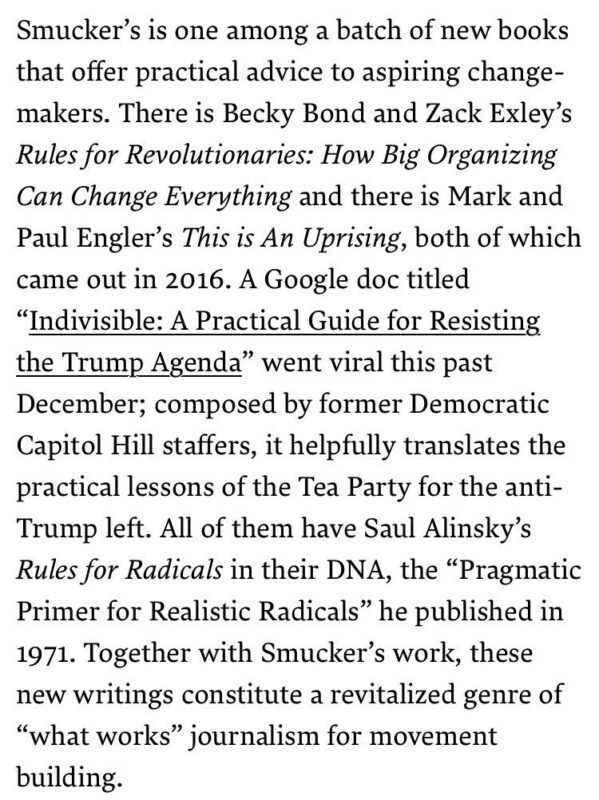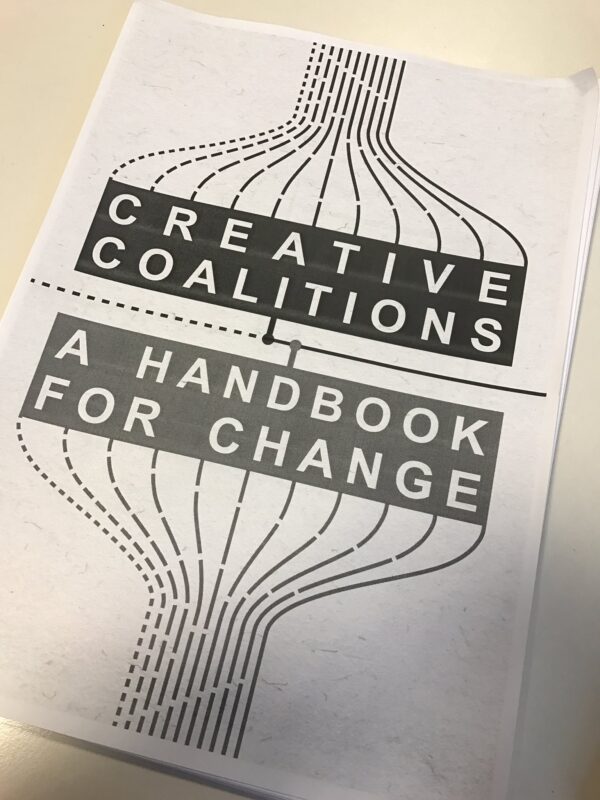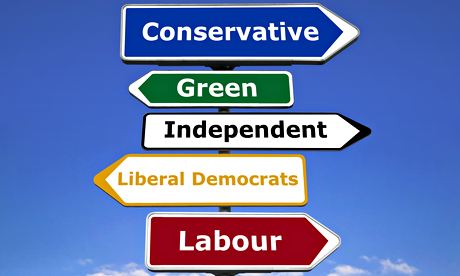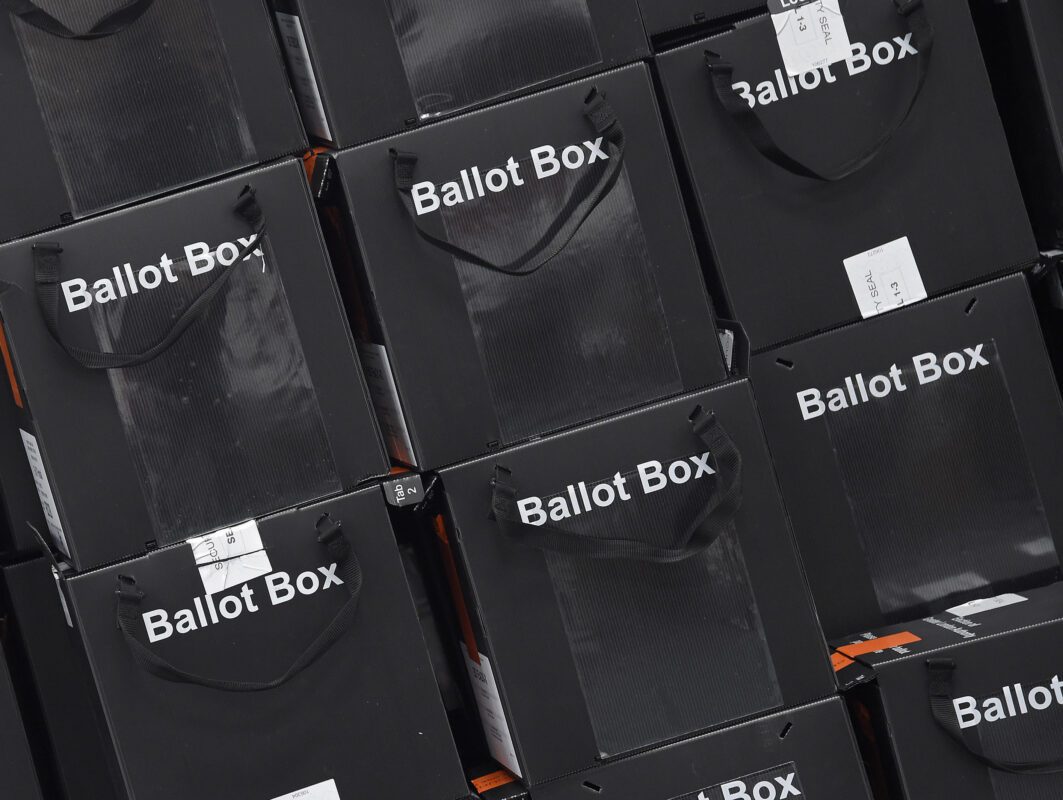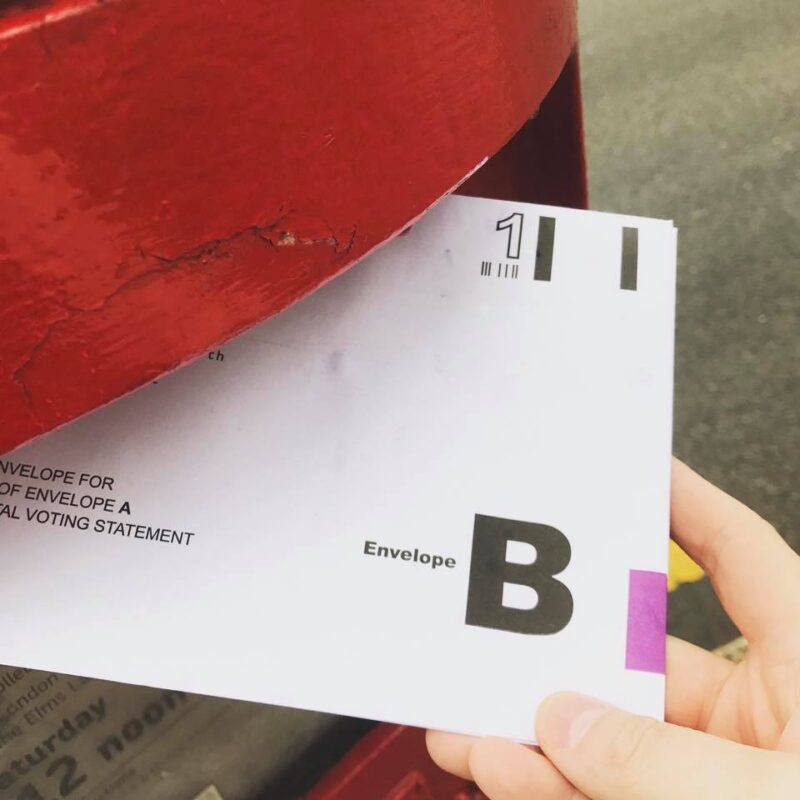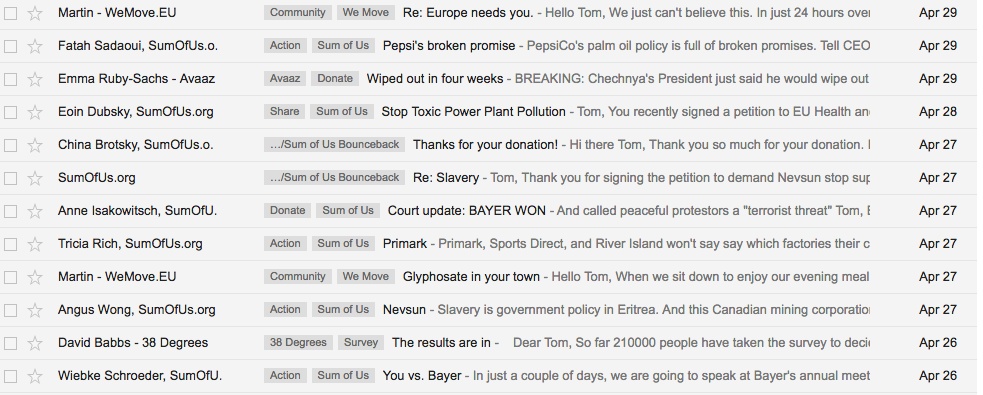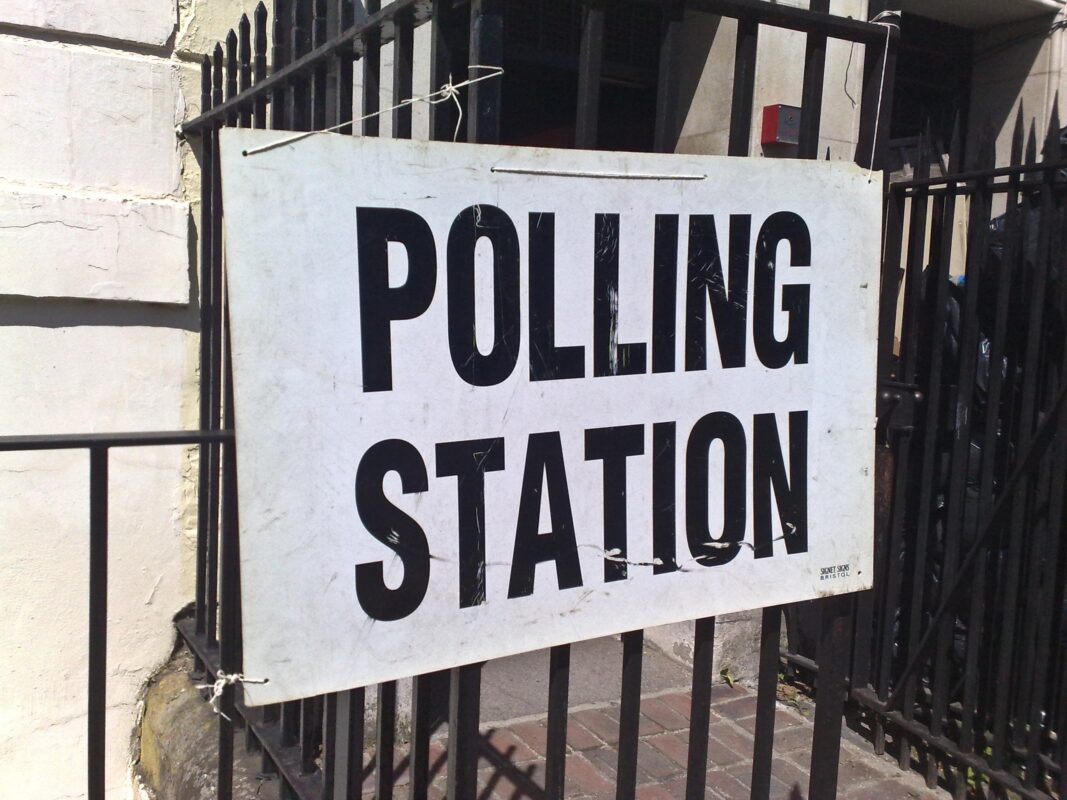Summer is here, so I’m going to take a brief break from blogging during August. I’ll be back in September, but if you’re looking for some great content to keep you thinking over the coming month, here are some recommendations of some ace books, blogs and podcasts to keep you busy.
Books I’ve enjoyed;
1. Hegemony How-to: A Roadmap for Radicals – Jonathan Smucker’s honest look at why movements too often fail, and what we can do to avoid being closed groups. One of those books you find yourself nodding at as you read + highlighting sections of it!
2. The Myth Gap: What Happens When Evidence and Arguments Aren’t Enough – Alex Evans has written a really enjoyable read about the need for us to rediscover the power of stories and myths to inspire change.
3. Analytic Activism – David Karpf looks inside Move On, Avaaz and other online campaign platforms approach. It’s one of the most accessible academic books I’ve read, and full of useful learning. Good podcast with David here if you’ve not got time to read the book.
4. Radical Candor – I took a while to get into this, but have been recommending Kim Scott’s book on how to give and receive feedback as a manager, but found it really helpful for anyone managing a team.
5. The Talent Lab: The secret to finding, creating and sustaining success – a really interesting look into the drivers behind the success of the GB Olympic team. As I suggested in my post on what we can learn from Chris Froome there are lots of lessons for campaigners to reflect upon from winners.
Books I’ve had recommended to me which I’ll be reading in the coming months;
1. This Is An Uprising: How Nonviolent Revolt Is Shaping the Twenty-First Century by Mark + Paul Engler
2. Hope in the Dark: Untold Histories, Wild Possibilities by Rebecca Solnit
3. How to Resist by Matthew Bolton
4. Carpe Diem Regained by Roman Krznaric
5. Get Up! Stand Up!: Personal journeys towards social justice by Mark Heywood
6. No is Not Enough by Naomi Klein
Some long reads I’d recommend;
1. Barack Obama on how to bring about change.
2. Stop Raising Awareness Already
3. Protest and persist: why giving up hope is not an option
If you’re not the read type then here are some ace podcasts to add to this list;
1. Advocacy Iceberg
2. Candidate Confidential
3. Freakonomics Radio
And if you’re able to get to London, then here is an exhibition to check out;
1. People Power: Fighting for Peace at the Imperial War Museum
Finally, you need to add the following blogs to your reading list;
1. Analytical Activism by Alice Fuller
2. The Good Campaigner by Emily Armistead
3. The Social Change Agency
4. Jim Coe
Author: mrtombaker
What campaigners can learn from Chris Froome
I’ve been fascinated by politics and campaigns from a young age, but my parent have evidence that I’ve been making Tour de France scrapbooks to follow the annual cycling race since I was 10!
So as Chris Froome wins his 4th Tour de France, I’ve been thinking a little about what lessons campaigners can draw from cycling, and in particular Team Sky (who’ve won 5 of the last 6 races) when it comes to strategy, approach and execution.
1 – Be totally focused on winning – Team Sky come to the Tour de France with one clear objective each year – to win the race. Throughout the 3 weeks that the race moves around France, there are plenty of other sub-objectives to distract – you can win stages, win other jerseys, and more. But Team Sky don’t get distracted by them – they just care about getting their leader across the line in Paris at the end of the race. It’s a ruthless focus on a single goal.
2 – Adjust your plans daily – The old adage that ‘no plan survives first contact with the enemy’ is true in the Tour. There are so many factors the can’t be immediately planned for or predicted – the weather, someone on the team might be injured and not able to race or a mechanical problem. Anticipating what might happen, and then adjusting has been evident throughout the race, when Froome got a puncture, the team member riding alongside him was ready to sacrifice his wheel, while others were ready to pace him back to the front. And because the team have a clear objective, they know what the implications of adjusting the plans are.
3 – Poor planning leads to poor performance – Let me take you to Rodez and the end of stage 14. Chris Froome has lost the Yellow Jersey (worn by the leader of the race) to Italian Fabio Aru, but his team have spotted that the finishing line is uphill and could allow Froome to get some time back on Aru. So the team ride the whole day with the objective of getting Froome to the foot of the climb at the front of the field. Aru’s team don’t and he loses the jersey.
Other examples abound, from having support staff down the narrow roads of the French countryside to give out bottles and musettes (the bags with the cyclist food) rather than rely on going back to the support cars, to exploiting the changing direction of the wind on stage 16 to break the field into a smaller group, to having mechanics double-check everything on the final Time Trial stage because Froome couldn’t afford a mechanical mistake. Team Sky don’t let anything get past them when it comes to being brilliantly prepared. It’s a good reminder for campaigners to apply the same approach.
4- Marginal Gains – Team Sky are built on the concept of marginal gains – the idea that you should be looking for ‘the 1 percent margin for improvement in everything you do’. It’s about being data driven and question everything + challenge existing assumptions. Earlier this year I read ‘The Talent Lab‘ which looks at the approach of the British Olympic team, which shares many of the same approaches as Team Sky.
When members of British Cycling, who work closely with Team Sky, identified that they could improve the power output of there cyclists by making small adjustments to the saddle angles they lobbied for the rules to be changed. Nothing is left to chance when it comes to the approach they’re taking, but perhaps more importantly no question or assumption is a dumb one to asks. For campaigners I think it’s a reminder to look for improvement in every area, but also have a really questioning mindset.
5 – It’s a team effort – Sure it was Chris Froome standing on the top step of the podium in Paris, but he’ll be the first to tell you that he couldn’t have achieved it without the 8 other members of his team. Everyone in the team has a clear role to play across the range and through each stage. Some to support on the flat, some when the race goes up hill. In some way cycling is the ultimate team sport. It reminds me of this list of roles needed in an advocacy movement. You often need all of those roles to be successful.
Building Coalition – learning from the best
When it comes to building brilliant coalitions that achieve change, the team at Crisis Action are some of the best in campaigning sector at doing just that. And to benefit all of us, they’ve shared the approach and model they use in Creative Coalitions – A Handbook for Change.
I’m passionate about the importance of coalition campaigning, and it’s something I’ve written about before on the blog, but listening to Nick Martlew, author of the guide and UK Director of Crisis Action speak when he came to the Save the Children office a few weeks ago, I was struck that there are some characteristics and approaches that epitomise highly effective coalition builders that we can all learn from.
1. Strive for excellence – coalitions can often fall into a ‘lowest common denominator’ approach, where you start out by considering what are the asks that everyone can agree on, rather than what is needed to deliver change. For Crisis Action that’s the wrong approach, they start by asking what’s the outcome they are looking to achieve and then ask who they need to involve to make that happen. Work to build together a critical mass of individuals or organisations who have a shared view of how a change will happen.
2. Thrive on feedback – you can only improve if you are actively asking others if what you’re doing is or isn’t working. See feedback as a ‘gift’ and actively seek it out from those you’re working with. It might not always be comfortable received but it invaluable about making you more effective. Be generous is sharing it with others.
3. Keep ‘other’ people in the game – if you’re building a coalition that isn’t going to involve everyone that doesn’t mean you have to ignore them or cut them out. Keep others informed of what’s happening, draw on the insight and knowledge they have – you never know when their insight or connections might come in useful later down the line. Share the insight you have.
4. Always talent spot – keep asking does the tactic your delivering do enough to solve the problem. If it does bring together the best people that can help to deliver that. Crisis Action always asks who should be on the team – who are the talented individuals that they need to be seeking out to get involved.
5. Exceptional networkers – be active at building out networks beyond your usual suspects. Spend time asking them for their opinions – share your ideas for plans and tactics with them and get them to give you an honest assessment of it the tactic is likely to bring about the change you’re looking to achieve. Ask contacts in your networks for ideas of what they think is likely to make the difference.
6. Be Servant Leaders – deploy ego wisely, remember that the cause or the goal matters more than an individuals profile. But that doesn’t mean being un-directed, Crisis Action encourages the principle of ‘democracy of ideas but a dictatorship of delivery’ ensuring leaders are effectively and rapidly bringing the best ideas to life, and delivery is kept on track.
7. Risk Takers – not in a cavalier or reckless way but they’re calculated gamblers who’ve asked around for evidence of what is likely to have the biggest impact, asking informed targets directly what would happen if they attempted specific approach, and then make the calculation about if it’s an opportunity that worth pursuing. That means it’s as important to learn from failure when things don’t work out as it is from success.
8. Seek efficiency – working in coalition often with high costs (I’ve written about what economics can teach us about working coalition). Great coalition builders seek to actively lower the transaction costs of getting involved. They look to find efficiencies that help to keep others involved.
9. Compulsive chroniclers – Write down everything that happens that suggests you’re having an impact – don’t just leave it to the evaluations. Crisis Action have an ‘evidence of change‘ database which helps to capture all the seemingly small changes that those involved in the coalition are seeing which often add up to the big impact.
For those that want to learn more about the report here is a useful summary, and Jim Coe (as always) has done a fascinating podcast with Nick.
Up all night – questions about the direction of campaigning
Occasionally I find myself wide awake in the middle of the night (tip here – if you ever find yourself in the same situation put on Radio 5, you’ll get to experience Up All Night, one of the best shows on the radio) and I find it’s (sometimes) the time to consider some the big questions about campaigning.
In the past few weeks, I’ve had the opportunity to attend a few events where I’ve been able to wrestle with some of the big questions that Campaigners are facing into. It kicked off at a discussion as part of the Sheila McKenchnie Foundation Social Change Project, then I got to hang out with some of the team at The Good Lab, before finishing up at CharityComms post-election event for campaigns leaders.
So lots of good conversations, but what are the big questions about campaigning that are keeping me awake at night? Here are a few I’d suggest from listening to conversations in the last few weeks;
1. What’s the future of digital campaigning? We’ve all dived in wholeheartedly to embrace the opportunities that digital campaigning provides to win change and increase our supporter base – and seen many successes as a result, but as organisations find it harder to mobilise the numbers needed to win change, while acquiring new supporters is proving harder to do for many – impacted I think by the wider conversation about charity preferences. So if the future isn’t in list growth and petition inflation is starting to fatigue many of our targets, then what is the future approach? How do we harness a digital first approach to ensure we have real impact. How do we embrace the way that digital has transformed and democratised campaigning for so many?
2. What does true collaboration look like? We all know that unusual coalitions secure change, and many of us are actively working with others in our campaigns. But given the scale of the challenges that we face, and the limited resources that we have, do we need to consider deeper forms of collaboration? That could be around building shared tools, or finding shared narratives that we can all use beyond single issues. But beyond that what does collaboration look? What’s the role for bigger and more well resourced campaigning organisations to support individuals and movements that are being established?
3. Do we even know the edge of our bubbles? We are increasingly more data driver in our campaigning. We segment based on what you’ve done previously and we aim to target individuals we believe are most likely to take, but are there limited to being data driven, and does it just keep us in our bubble without realising what’s happening outside it. How do we rediscover the skills of listening and adapting to what the external world is telling us. Everyone marveled, for a time, at what Kony 2012 achieved, but that was because they’d sharpened their message by getting out at the coal face and giving hundreds of talks to their target audience of young people.
4. Do we worry enough about our opponents? It’s perhaps a result of how much campaigning has been professionalised, but how munch time are we actually thinking and anticipating our opponents? If the root of the word campaigning comes from the military concept of ‘taking the field’ – as troops moved from the safety of a town or fort into a field for battle – do we need to grow more confident about defining and naming our opposition? Is it OK to put no limits on who is on ‘our side’ and see campaigning as simply a skill like IT programming, or do we need to be clearer on calling out who our opponents are? In politics, opposition research is a key part of any professional operation, but while we devote resources to define our power mapping, should we do more to understand what making our opponents tick?
5. Are charities the best vehicles to deliver social change? I was struck by a comment at one of the sessions about how we need to do more to create organisations that are able to bring about change. Do our structures and approaches actually prevent us for responding in the ways that we need to?
As Naveed from Results observes ‘Recent mobilisations channelling public concern have been far more organic; not leaderless or disorganised, but working perfectly well without a top-down structure. Successful movements allow people to do their own thing, based on a central idea or goal that fires their imagination, but doesn’t tell them what to do. Look at the way people came together around the Manchester terrorist attack, the Women’s Marches, Black Lives Matter, or the Refugees Welcome movement. Only in the latter have NGOs played any kind of a role, and it seems that we haven’t yet properly woken up to the reality of how people organise around causes today.
And if we do have a role to play, and I think we do, how do we adapt to respond to the times we’re in and the approaches we’re finding are successful.
6. Where does change happen in the new political context? If we’re likely to see a period of political uncertainty, with a Parliament focused almost exclusively on Brexit, and all of the parties having their own internal challenges, how do we adapt as campaigners? Is now the time to invest in long-term attitudinal work that needs to be undertaken, ensuring support among politically key groups. In Parliament, should we continue to look to build support from across parties, or utilise the tiny majority that the Government has to play parties off against each other?
Just a few questions I’m grappling with – what are the questions about campaigning that are keeping you awake?
'Mistakes, I've made a few'
‘Mistakes, I’ve made a few’ so goes the song. I’ve been thinking a lot about how I can learn from mistakes and failure since the start of the year. Much of it was prompted by reading Matthew Syed’s Black Box Thinking. In it, he writes
‘a closed loop is where failure doesn’t lead to progress because information on errors and weaknesses is misinterpreted or ignored; an open loop does lead to progress because the feedback is rationally acted upon’
The book explores why some industries, like airlines, are good at practising open loop learning, while others, like the medical profession, less so – see here for the obligatory Ted Talk to accompany the book.
I’ve been thinking a lot recently about how I can get better at learning ‘open loop lessons’ in my work. Many of the campaigning organisations that I admire at the moment talk about how they have a culture of testing, and a high tolerance for failure, so what can I do to encourage that where I’m working?
It was something I challenged others at ECF to do (and it’s something I’ve blogged about before), so informed by a Chatham House rules session at ECF back in April, and my own reflections on when I’ve not got things right, here are a few reflections on how projects that I’ve been involved in don’t always work out the way they should.
1. The internal excitement bubble – sure they say in a brainstorm that ‘no idea is a bad idea’ but if you’re going to invest significant resources in taking an idea to market, it can pay to do some insight work first. To check that when you take your idea out of your organisational bubble it still a great idea. I remember the campaign I was involved in when we were sure people would want to stick around and ‘make a weekend’ of the march, so we invested in a range of events. Hardly anyone came along. Something we would have found out if we’d asked a few people about their plans. Great idea in our bubble, less so outside of it!
2. Going to scale too quickly – sometimes good ideas need to take time to grow, you need to start small to learn what’s really going to work and what’s not going to work before you go to scale. I know that I’ve fallen into the trap of believing that we can quickly grow a scheme or idea, but in the attempt lose a huge amount of the goodwill you need for a project to succeed. I can vividly recall one volunteer project when we came up with an elaborate plan involving, but soon found it wasn’t working. A quick pilot of a few months would have easily helped us to iron out the kinks in it, but instead, we squandered a huge amount of goodwill.
3. Less failing, more fizzling out – Perhaps this shouldn’t be talked about in a post on failure, because much of our focus on the failure of a project or idea to get off the ground. But the truth can be that sometimes not knowing when to end something is as much a failure as not getting something started. I can think of a number of projects that we should have closed down rather than just keeping them going with just enough resources to stay afloat but not enough to have the real impact they should.
4. The resource gap – I know I’m guilty of this, especially as a manager where it always feels like you’ve got to make a trade-off between the amount that you can resource a project. But not backing a project with the resource it needs, or worse still ignoring what experienced colleagues are saying about the resourcing needs, in the hope that by sheer determination you can get it over the line.
5. Who wants a project to succeed? – Successful projects need clear owners. I’ve seen many projects squander because they lack someone who feels responsible for delivering. This is especially easy in a big organisation where. Since starting in my new role at Save the Children I’ve really found using a R.A.C.I. to be a useful tool. They help to ensure everyone is clear on who is responsible (the person who is going to make it happen) and accountable (the person who needs to be held to account if doesn’t happen). How I’d wish been introduced to that earlier in my career.
6. A Fresh Pair of Eyes – We’ve all done it, sent an email out with a terrible typo in the subject line, forgotten to add the link in or accidentally over promoted someone in an email. Lots of the mistakes I make are because I’m too close to the topic and thus blinkered to the details. A fresh pair of eyes is what’s needed. But as Jim Coe writes in this post on why we missed the election outcome, the concept could be used more widely, by making sure that we’re involving a wide range of perspectives and approaches, to challenge what might be in front of us but we can’t see because we’re blinded by certainty.
I’m certainly on a journey on all of this, so I’d love any reflections that readers have about how as campaigners we can get better at open loop learning.
After the results – a few election thoughts for campaigners
I’m still in that post-election daze, trying to catch up with sleep and making sense of what happened on Thursday. There are already acres and acres of writing about what we can make of the result, given that few saw it coming, so I’m just going to add a few reflections for campaigners as we look at what happened and look ahead.
1. Jeremy Corbyn can really, really mobilise people – I was running a Campaign Centre in Tooting on Thursday. Normally for a General Election, you’d expect a few hundred people coming through to help get out the vote. Thursday was something else. We had close to a 1,000 people come down and join us.
Whatever you thought of Jeremy Corbyn before Thursday, his ability to mobilise and energise people to get involved is phenomenal. Most of those helping out in marginal seats hadn’t ever got involved in a political party before. Lots of lessons for campaigners looking to mobilise to be learnt, but my hunch is that he’s embodied much of what’s been written about networked campaigns – a central strategic goal, but a huge amount of autonomy beyond that to allow individuals to express that in different ways.
2. Celebrate that turnout amongst young people is up – While I have a nagging concern that it might not be sustained – so I hope someone is thinking about the turnout operation for the next election – it something to celebrate. For campaigners, it’s time to identify how your issues poll with young people. This slide from a presentation I saw in Canada (which experienced a similar bump in youth turnout when Justin Trudeau was elected) a few weeks ago shows how the priorities of millennial are very different.
Inspiring: @Colettod from @abacusdataca shows millennials do care abt income inequality, climate change #CAN150plus pic.twitter.com/IVuc3kWBbb
— Kate Higgins (@katedhiggins) May 9, 2017
The other good news about the increase in turnout is that, as this Economist article suggests ‘one of the strongest determinants of a person’s likelihood to vote is whether they voted in the previous election‘ so that bodes well for future elections.
3. Targetted is the new broadcast – While been lots written about the Conservative’s use of Facebook targeting at the election, much less has been written about how Labour used social media. This Guardian article suggest Jeremy Corbyn also benefited massively from lots of content that was shared across the internet, again often outside of the view of commentators and many others who weren’t the target for it – I didn’t see any because I’m clearly getting old. A reflection for me that while as campaigner we can often obsess about getting mainstream media coverage, lots of campaigns can now be hugely successful by reaching the right audiences through social media.
4. Welcoming new players to electoral politics – I wrote in my pre-election piece about the more active role campaigning groups like 38 Degrees was planning to play. I don’t think these can be underestimated in the final results. For example in one of the seats that 38 Degrees focused on turning out the vote, they saw an increase of 6.6% in Hove – that’s well above the 2.3% increase in turnout across the country.
Avaaz is reporting that in focusing on 50 key constituencies it saw them ‘flood them with 1.9 million Facebook ads, sending 3 million emails with voting information, reaching 737,000 people, 48% of women voters on Facebook, and making sure young people turned out to vote. Finally, Avaazers SMSed 50,000 people on polling day’.
Beyond that, the existence of organisations like More United who were able to quickly provide funding to pro-Remain candidates can’t be underestimated. Unexpected elections cost money and those donations would have been invaluable. Zoe Williams reflects more on the role of these groups here.
5. To influence you must build local power – I’ve written before about why marches aren’t going to stop Brexit. Given the new political arithmetic, I’d argue even more strongly that those who want to see a ‘soft’ Brexit need to look to build power in the places where they can have the most impact – but it’s the same for all topics.
Right now over 50 MPs sit on majorities of 2,000 or less, so for those concerned about their issues need to demonstrate pressure in the right places. With such a small overall majority, just a few dissenting voices from the Government benches and you could have a huge amount of leverage, but that needs local pressure to make it happen.
6. The Lobbying Act needs to change – if I’m correct, given the fact a Hung Parliament could mean an election at any time, we could be living in a state of a perpetual Lobbying Act, as the rules regulate any activity that happens 12 months before an election could be seen as regulated activity. That doesn’t seem like a sustainable situation, where campaigning charities are going to have to influence, especially when the Parliamentary maths means that smart campaigning is going to have to make the most of the different parties positions.
7. Don’t assume anything and prepare now for the next election – It’s easy with hindsight to suggest it would have been sensible to plan for a Hung Parliament, but as campaigners sit down to think about the possible scenarios for the next election, if we’ve learnt anything from the last few years is the importance of gaming out all possibilities from a Labour or Conservative majority, through to another Hung Parliament.
Before the results – some observations from the 2017 General Election
I love elections.
While I might have complained when I first heard that Theresa May was taking the country to the polls, it wasn’t long before I found myself getting stuck in campaigning in my local community, and implementing our (hastily assembled) election plans at work.
Who knows what will happen on Thursday evening, but before the results come I wanted to highlight a few ‘winners’ from the election, based on the campaigns that I’ve noticed.
1. The rise of the MicroPACs – BBC News has this great article on the rise of individuals who’ve used Facebook and other social media platforms to get their campaign messages out, what they’re dubbing MicroPACs – after the Political Action Committees that pour huge amounts of money into campaigns in the US. While much of the campaign news has focused on the huge ad spends of the Conservative Party on Facebook advertising, learning from what Trump did in the US which is summarised well here.It’s fascinating to see how individuals with some expertise of how to do effective targeting, and effective messages can get them out in front of tens of thousands of people.
Certainly a lesson to be learnt here for all campaigning organisations about how giving away some control of your message can lead to creative execution of ideas. Having said that the work that the team behind Who Targets Me has been doing is also fascinating work tracking the adverts that the parties are pushing – this article gives a small snapshot in the breadth of messaging targeting.
2. 38 Degrees and Avaaz dive right in – Unlike 2015 when it felt that both of the big online platforms seemed to be less involved, both Avaaz and 38 Degrees have been really active in this election. Perhaps been learning from colleagues at Get Up in Australia who’ve built themselves in formidable election campaigning machine.
While 38 Degrees have been focusing on voter turnout in two marginal seats (Hove and Bath) looking to encourage civic participation rather than pushing a specific party, as well as organising a hustings. Avaaz have been much more active at pushing supporters to join activities of progressive parties, and supporting the work of the Progressive Alliance (see below).
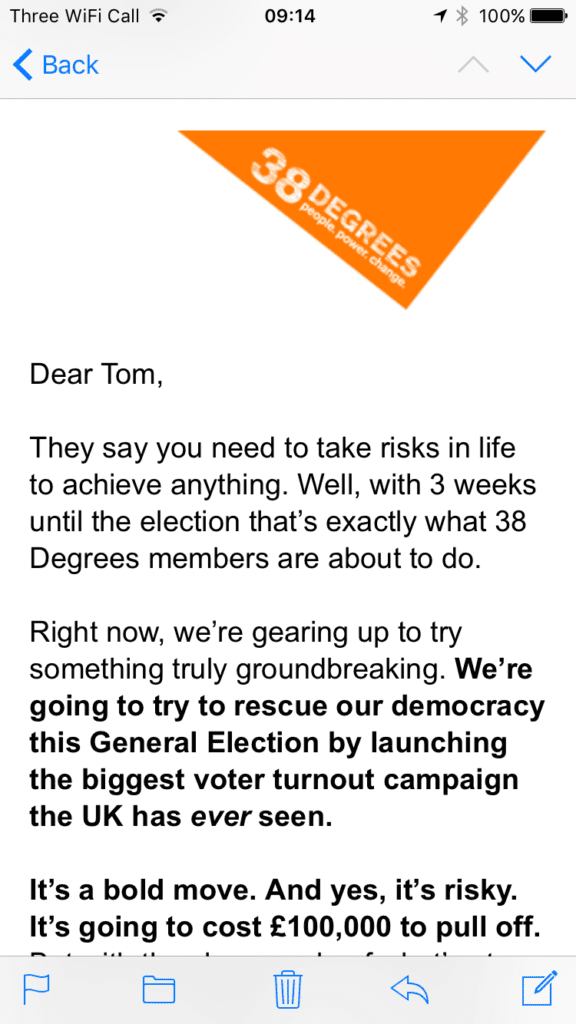
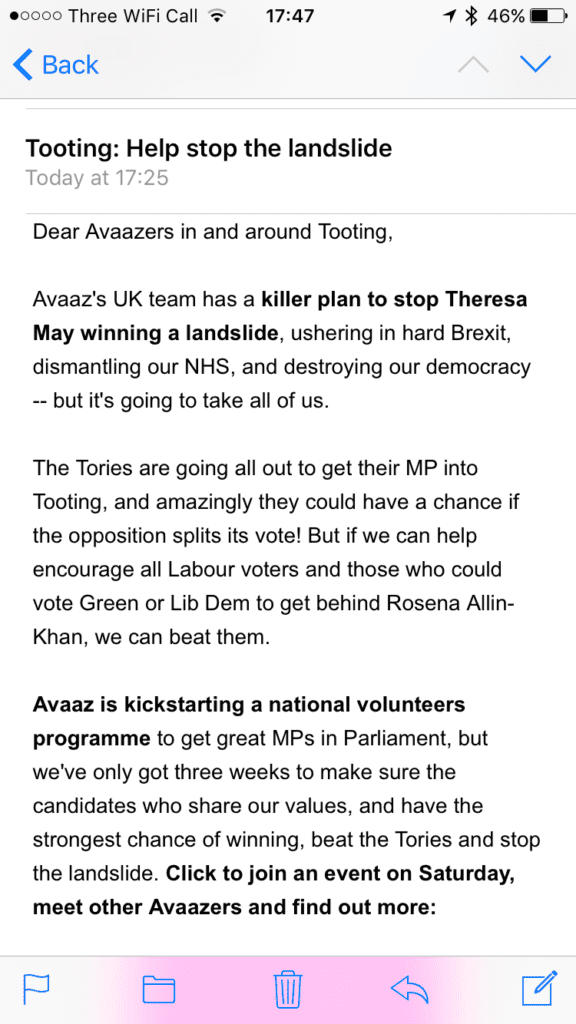
It’s also been interesting to see a few other initiatives emerge during the election, including More United, which was is campaigning for pro-Remain candidates, and Campaign Together, which has been driven by some campaigners involved in the Bernie Sanders campaign. I’m sure post-election there will be time for those involved in some of these initiatives to share the stories of what worked and didn’t work, hopefully providing some useful lessons for campaigners on new models of organising.
3. Go local – I’ve long been impressed by the School Cuts campaign run by the NUT but they seemed to have kicked it up another level this election. The website has been updated to show the impact of proposed party manifestos from each party, coordinate local groups – I’ve seen an increasingly active local campaign in Tooting where I live, and some cracking social content which has clearly tapped into parents concerns. Some really useful lessons in this for all campaigners, including about the importance of providing local information if you can to help make your campaign as tangible as possible to people.
4. The Lobbying Act – despite renewed assurances from NCVO and even the Electoral Commission that charities can campaign, the act seems to have had the anticipated ‘chilling effect’ on many charities (see here as a good example of concerns). Perhaps it was the short notice of the campaign that meant unlike 2015 organisations didn’t have time to prepare, but the act has once again appeared to have an impact on the way that many charities have engaged in the election. Following the election, campaigners need to look again at how we can get the Act amended to remove any ambiguity about charities campaigning during elections.
5. Aid Campaigners – so I’m biased, and can’t share everything that happened, but the first few days of the election saw a huge amount of focus on if the Prime Minister would commit to maintaining the 0.7% aid target. It was a heavy lift, but within a few days we’d seen all parties commit to the target. It happened through a combination of bringing smart insider engagement with key influences together with targeted public pressure demonstrating the depth of support for the issue, and developing messaging we felt would resonate beyond our traditional supporters (see #BiggerBritain). It was lesson for me of the importance of how all the aspects of advocacy can complement each other, and how to use different tactics to drive the issue across news cycles. I’ll write more in due course!
And finally, NCVO has also come up with a neat list of 10 great charity campaigns this election – it’s full of more good ideas of how charities can make the most of an election.
Why campaigning charities shouldn't leave the pitch during the election
There are lots of article going around at the moment that suggests that campaigning charities should just walk off the pitch during the election campaign.
From weekly articles suggesting that the lobbying act is stopping charities speaking out – the latest here which suggest that some social care charities have felt they couldn’t speak out in the last few weeks. To an article published in Third Sector last week, where the director of NFP Synergy, Joe Saxton, argues that charities shouldn’t campaign during an election period suggesting that;
‘Charity campaigning during an election is like standing on a railway track in the face of a runaway train and shouting that you’d like to talk about their rail safety record. They’re not listening. They’re not interested. They’re politicians at the point when the annual cycle of politics is about to reach a climax. They might want to do a photo op with you and kiss any babies you have lying about, but don’t mistake that for cast-iron commitments to your policies’.
Now I don’t agree that at the calling of an election, charities should go into some type of self-enforced purdah, but rather than just rushing to say that I disagree, I wanted to reflect on why I think charities should get involved in speaking out around an election period (and on this it’s useful to read the response in the comments from NCVO with its helpful reminder that charities are encouraged to speak out during election periods – but they have to comply with the relevant charity and electoral law).
I think charities should campaign during elections for the following reasons;
1. This the moment when the direction for the next Parliament is set – part of the reason that the current election was called was so the Prime Minister could secure her own mandate on a manifesto that she’s put forward. That’s a good reminder of why organisations work to make sure that manifestos reflect the policy asks they’re pushing for. They know they’ll set the blueprint for what a government plans to do in the coming years.
While the work of getting into manifestos often takes months of work before they’re published, stepping back at the last minutes before parties finalise manifesto seems short sighted, especially if you can show a constituency of support, is a key opportunity. I know in my work on international development, elections have been a key period to get commitments from parties to meet the 0.7% target for overseas aid – something that has been invaluable for future campaigning.
2. They are a vital chance to build relationships – Not campaigning during an election and then turning up and asking to an audience after election day, is to me a little like deciding to support a football team once they’ve won the trophy.
Candidates are out and about day-in/day-out during election periods. They’re listening to what local voters are saying and this is where I disagree with Joe that politicians aren’t listening. I think it’s the opposite – most candidates are out and about in their constituencies far more than the rest of the year, and they’re critical periods for showing that you have a constituency of support for your issue or cause.
In the constituency I live in there’s is a particularly active campaign around school cuts, and I’m sure that will resonate with whomever gets elected. Not trying to demonstrate support for your issue during an election period and then turning up when someone gets promoted to a new job and demanding you should be on the top of the pile to meet with seems. Demonstrating power during an election period – as organisations like Citizens UK have done so well, can open doors post-election.
3. We need to be involved in democracies ‘big match’ – Campaigning charities rightly raise concerns that that the Lobbying Act is unfair because it appears to stop some voices speaking up at election time while allowing others to continue to do so. If we want charities to be seen as part of the rich diversity of voices involved in democracy here in the UK then vacating the pitch while the key match is being played seem short-sighted. Given the important work that so many do across the UK and beyond, the evidence from this that can shape policy and the breadth of the public who support our organisations with their donations, voice and time means we should be involved.
4. Elections are opportunities to engage people in your issues – as campaigner we often live in a political bubble, assuming the majority of people around us are thinking about politics all of the time. They’re not, as Jim Messina suggest the average person is thinking about politics for about 4 minutes a week, but I’d suggest election periods are a time when people more so than any other time are engaging with politics. They’re asking questions and searching. I’ve certainly seen an uptick in activism from my supporters, and the evidence from post-election periods is that many organisation see a surge in people signing up.
Now, all this doesn’t mean that we should approach elections without any strategic thought. Too many campaigns don’t think enough about what their strategy is around an election time.
They focus on the wrong constituencies, don’t providing candidates with useful (or accessible) information, or not building the right groups or alliances of support to demonstrate why politicians should act on their issue. I wrote a few thoughts about how charities can do that well here and here.
What happened when I said 'YES' to every email from an online campaign platform?
What would happen if I just said YES. Inspired by Glyn Thomas who signed up to 100 charity emails and finishing reading Analytical Activism by David Karfp, which looks at the approaches online platforms use, I set myself a little experiment.
What would happen If I signed up to the email lists of some of the biggest campaign platforms and just said ‘Yes’ to whatever landed in my inbox?
I’m doing this because I want to learn from the best. My hypothesis – getting very scientific here – is that because the online platforms have the most resource and they rely most on emails to mobilise their supporters that they’ll be at the cutting edge of how to get me to take action again and again!
But I’m also interested in how quickly could I ascend to a super user status, who is making the user experience the easiest, what would I be asked to take action on, what’s the welcome journey like (as Glyn points out ‘The first 8 weeks are crucial to building a relationship with a new supporter, even someone who has just signed up to receive emails’) and what else I’ll discover.
The rules I’ve set myself are simple. Sign up to join the campaign via their website not via a specific action, say yes to anything that comes into my inbox that I can do, donate the smallest amount when asked, don’t do the share asks following taking action, but do everything else.
So 3 weeks ago I signed up for Sum of Us, Avaaz, 38 Degrees and WeMove.EU – the four big online platforms if you’re based here in the U.K.
So what have I found in the first few week?
1. Signing up – Really easy to do for Avaaz, Sum of Us and WeMove. Boxes on the homepage just needing key information (name, email, country) from me. 38 Degrees was more difficult – actually really difficult. The homepage had a video about Bees it wanted me to watch. Fine. I did but at the end no ask to join or take action. In the end, I found the first petition being promoted on the site (to George Osborne to only have one job!) and signed that.
2. Welcome journey – I got instant automated welcome emails from all the platforms. All with a variety of request to share via social media.
But Sum of Us was the only platform that felt like I was taking me on a ‘welcome journey’, and it was super smart. An email welcoming me and asking me to hit reply so their emails would always come into my priority inbox (see below) arrived about 2 hours later – sensible because as Glyn found that ‘there was a roughly 50/50 split between emails ending up in the priority inbox and ending up in promotions’, then another about 12 hours later welcoming me to be part of the movement.
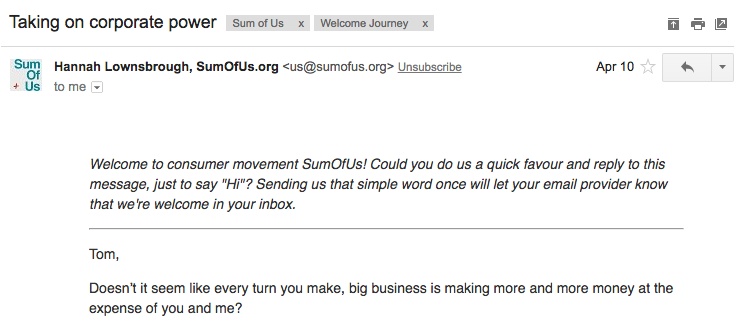
3. Frequency of Emails – It took a couple of days for the first emails to come into my inbox but 3 weeks later I’ve received the following;
| # of email | Frequency | |
| Sum of Us | 20 | almost daily |
| We Move | 4 | every 5 days |
| Avaaz | 3 | every 7 days |
| 38 Degrees | 2 | every 10 days |
Since starting the experiment we’ve had a General Election called in the UK, but Sum of Us and 38 Degrees have been the only platforms to mention that.
My sole emails from 38 Degrees they asked me to complete a survey about my priorities for the election. It’ll be interesting to see if that affects the future emails I get from them. As an aside despite ‘winning’ the campaign on George Osborne and his jobs I’ve not had any feedback that my action helped.
Avaaz went hard early on with 2 emails in 3 days, both on animal welfare campaigns, but then went dark for 2 weeks before asking me to donate.
WeMove haven’t actually asked me to take an online action yet – and to be fair to WeMove they are a whole lot smaller than the others in the test – but sent me a neat report back email, a donation request to support a day of action in May, and then invited me to get involved in that day of action in my community.
Sum of Us has definitely sent me the most emails, almost one every day of the experiment. Most have been linked to their campaign against Bayer and its merger with Monsanto – a bunch have had a focus on bees again linked to the merger. They also invited me to a webinar on the Snoopers Charter, and encourage me to register to vote (an action I didn’t take as I’m already registered to vote).
4. Types of Action – Online platforms are often criticised for focusing too much on getting people to sign petitions, but I’ve been surprised at the breadth of actions I’ve been asked to take over the last 3 weeks.
The breakdown looks like this;
| Action | Sign a petition, etc | 12 |
| Community | Join a community event or feedback on activities | 7 |
| Donate | Give money | 6 |
| Share | Amplify via social media | 1 |
| Survey | Share my views | 2 |
| Welcome journey | Introducing me to the platform | 1 |
Sum of Us have definitely been the most active at asking me to be a donor – within 2 days I got my first ask, then after my third action I got asked to consider becoming a regular donor – which suggest some impressive database automation. Although there was also a time when I got two donation emails within 15 minutes of each other, but they’ve also made it really easy to keep donating now I’ve signed up with 1-click giving.
We Move are the only platform to have provided feedback to me via email, and as I mentioned above they’ve been most active in getting me involved in offline activities pushing a day of action.
Sum of Us offered this really nice page telling me how my action is part of the wider campaign after I took one of the bees actions;
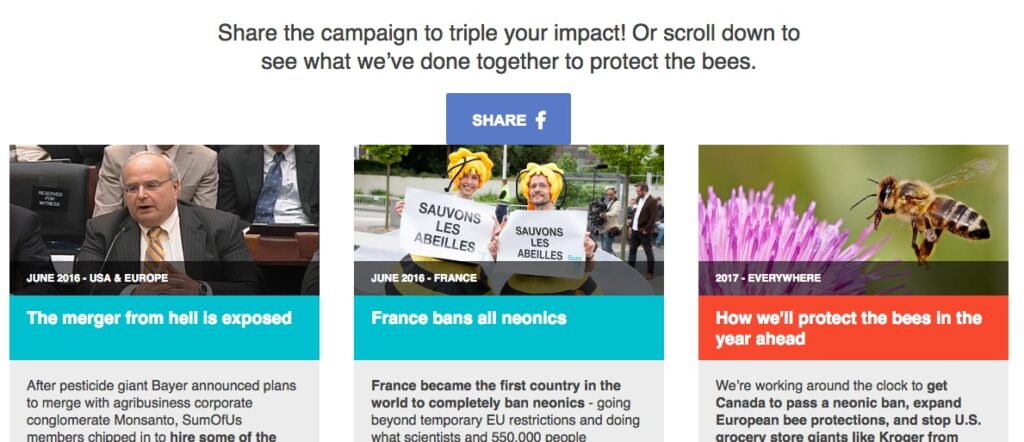
Sum of Us have also repeadetly asked me if I’ve got any more connection with the corporate targets I’ve been taking action towards;
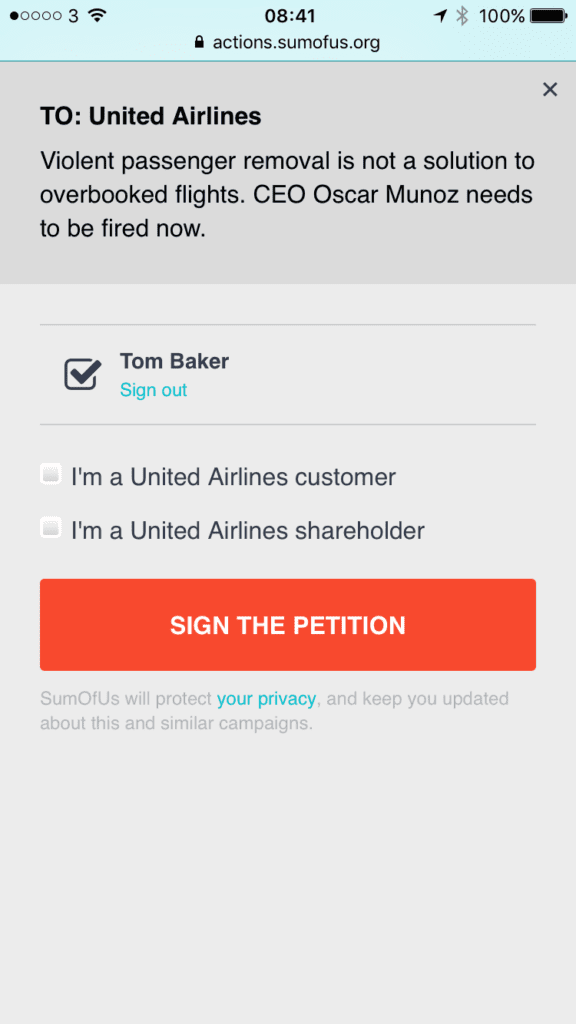
While I’m intrigued by the share numbers that Avaaz throw up after an action. I’ve no idea if they are real or randomly generated;

What next? I’m planning to keep the experiment going for the next few months, I’m interested to see if I get to a point when I get an action a day from every platform. I might also throw in a few other organisations – feel free to make suggestions of who – but I really recommend anyone signs up to a few email lists. I’ve definitely seen a few things I’d like to borrow for my own campaigning.
Preparing for June 8th – some quick thoughts for campaigners
Like many others, I didn’t wake up expecting that a General Election would be called today – but it has been.
I wrote this ahead of the 2015 General Election (and perhaps as importantly this after the 2015 election) which contains lots of advice and ideas that I think are as relevant today with the prospect of a ‘snap’ election than back in early 2015.
But here are 8 things I think campaigners need to be thinking about ahead of Thursday 8th June;
1) Check the law – As charities, you can’t engage in party politics, that is supporting one candidate over another, or providing an endorsement to one but not another, but we can, indeed we’re encouraged to engage in politics. Every campaigner should check out the guidance from the Charity Commission on campaigning in election periods.
As I write, I’m still not clear what happens with the timescales of the Lobbying Act, which was set up to work around the timelines of the Fixed Term Parliament Act, but also places further limits on what you can/cant’ do – I’d keep an eye on the NCVO or Electoral Commission website on this. But make sure that you’re checking in with legal experts who know what they’re talking about before you plan activities.
2) Read your evaluations from 2015 – As campaigners, we often love to dive into new plans, without considering what we learned from the last time around. While the political context has changed, May 2015 really wasn’t that long ago, so undoubtedly there are useful learnings from evaluations. Now is the time to dig them out!
3) Message discipline – If Trump with ‘Make America Great’ and the Leave campaign with ‘Take Back Control’ have taught campaigners anything, it’s the important to message discipline. Elections are times when more people are switched on to politics, but they’re also nosey times as well. So it’s much harder for your ten well reasoned and evidenced policy points to cut through! Focus on a single key message and keep talking about it!
4) The gift of time – The most precious commodity any candidate has between now and election day is time. You can’t create any more of it! You can always try to recruit more volunteers, raise more money, but you can’t create any more time. The polls close at 10pm on Thursday 8th June. Think about this in the design of the activities that you’re planning. If you want to get a candidate aware of and involved in your campaign think about how you can do that.
Provide candidates with something in return for engaging with your campaign, the opportunity to meet local voters, a photo they can send to the local paper or thanks on twitter. Also, think about the medium of your message, most candidates will tell you that they’re already being inundated with emails and briefing papers, so what about video messages or infographic.
5) All politics is local – It’s an old adage, but it’s totally true. Candidates are running to be MP for a constituency so that that means the campaigns that succeed do so by making the campaign local, that could be making connections to local figures or events, ensure your statistics are localised or finding local figures to speak out in support of your issue.
Also, think about what you can do to demonstrate the breadth of local support for your campaign the better. Remember most candidates are thinking about events to attend alongside two axes the likelihood of those present actually voting and the likelihood of someone in the room voting for them, so make sure you
6) But be aware of the national context – the graph below shows the top 10 issues in voters minds ahead of going to the polls in 2015. It’s an important reminder that while the issues we campaign on ‘day in, day out’ are top of our mind, for many voters they’re not. So think about that as you design your tactics – given the speed the election has been called quickly, you’re unlikely to be able to push your issue into the top 10. So how do you fix it to something that is already in the list, or being realistic about what you can expect to achieve.
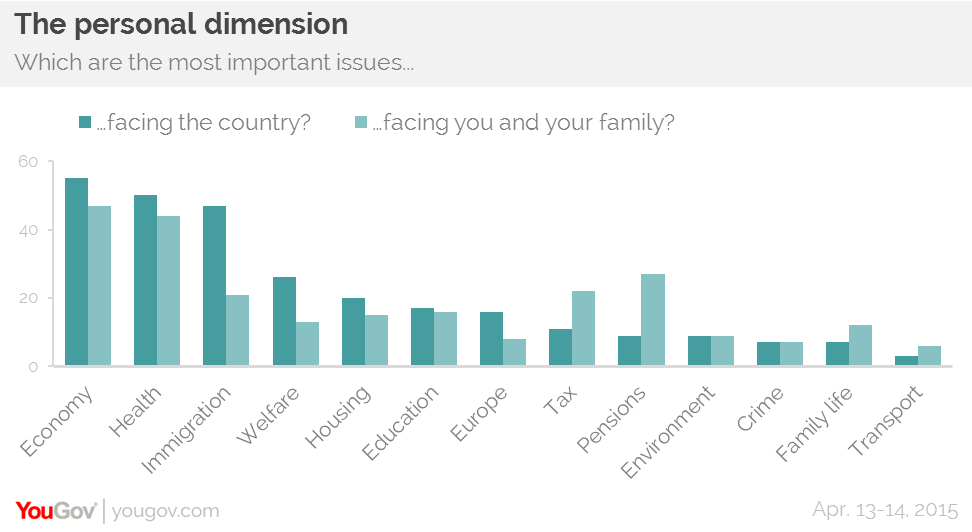
7) Don’t forget June 9th – The election may be over, but the hard work for whoever is elected has just begun. Be ready to follow up with those who’ve been elected, politicians are often accused of only appearing near an election, but can the same be said of campaigners?
Offer to come to meet with them to brief them on the issue, write to them, reminding them of what the said in the campaign and don’t overlook getting in touch with the candidates that weren’t successful – remember that they might be candidates in another election.
8) Look after yourself – With 24-hour news, social media, the endless speculation, and the looming urgency of polling day, elections can be exhausting. Make decisions today about how you’re going to look after yourself during an election, perhaps write it down, or check out this advice from Daniel Hunter. For me, as I’m getting ready for the next few weeks I’m already thinking about the habits I need to keep to!
And finally, as I’ve written before about getting involved in a party political campaigning, and now is a great time to do that. Go and offer to campaign for the party that you most closely align with, go and knock on some doors to find out what voters are thinking!
